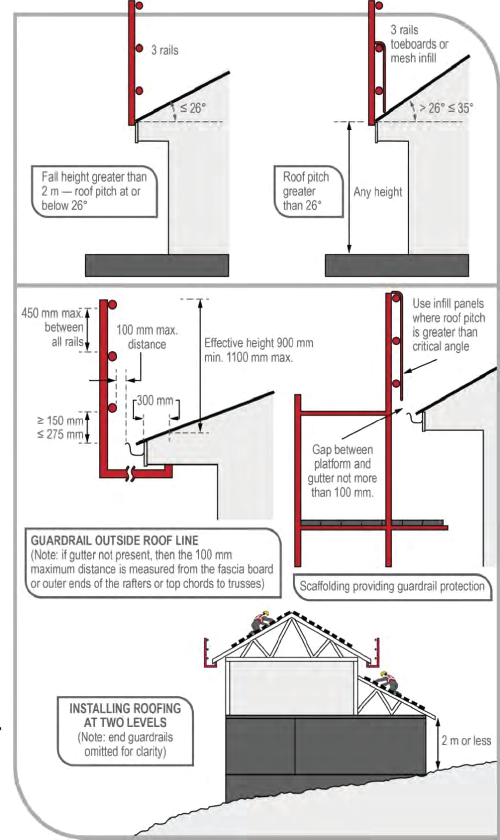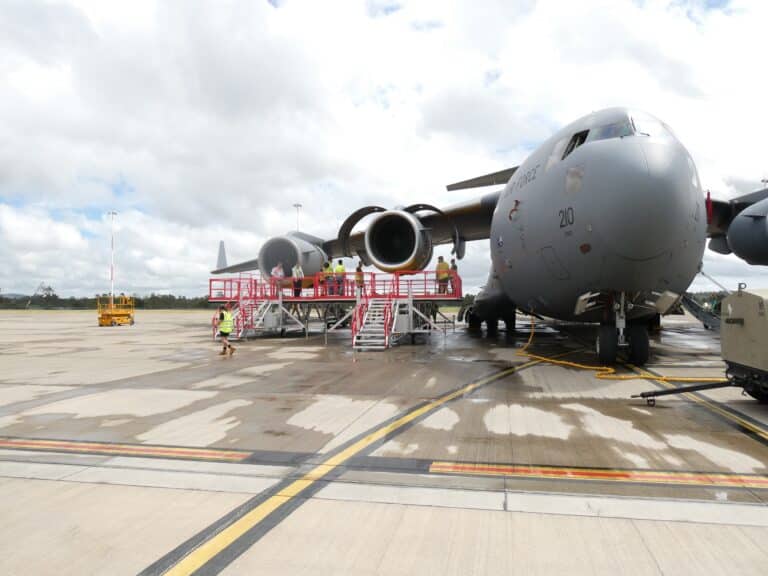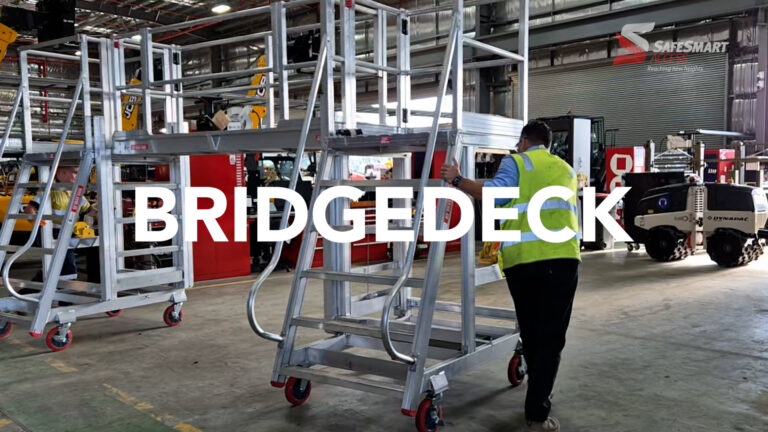Roof barrier protection is a critical aspect of maintaining safety when working at heights, particularly on construction sites and during maintenance work on roofs. Roof edge protection systems help prevent falls, which are the leading cause of fatalities and serious injuries in the construction and maintenance industries.
This guide offers an in-depth look into the types of roof edge protection, the differences between passive and active systems, and guidelines for installation and compliance based on the latest industry standards and safety regulations.
Importance of Roof Barrier Protection
Roof barrier protection is a crucial aspect of ensuring the safety and longevity of any building. Understanding the purpose of roof barrier protection is essential for contractors and building owners alike. Roof barriers are designed to prevent falls from heights, protect workers and occupants, and safeguard the structural integrity of the building.
Understanding roof barrier protection

There are two major categories of roof edge protection: temporary and permanent systems. Both are designed to prevent falls and protect workers while performing tasks on roofs.
A. Temporary Roof Edge Protection
Temporary systems are typically used during construction, renovation, or maintenance. These are designed to be installed and removed quickly, providing necessary protection for short-term projects. Common temporary systems include:
- Guardrails: The primary defense against falls. These are physical barriers installed along the roof edge to prevent workers from accidentally stepping over. These systems generally include top, mid, and bottom rails, and they comply with various standards like AS/NZS 4994.1 for a roof handrail.
- Toe Boards and Mesh Infill: These additions prevent materials, tools, or debris from falling off the roof. Toe boards are often used where the bottom rail cannot be installed.
B. Permanent Roof Edge Protection
Permanent systems are fixed installations often integrated into the structure of the building. They are typically used in areas where regular maintenance is expected, such as commercial buildings with HVAC units or solar panels. These systems offer long-term solutions and are often more robust than temporary ones.
Benefits of installing Permanent roof barriers
Permanent barriers play a crucial role in improving building safety and minimising the long-term hazards linked to roof access. By averting accidents and structural damage, they significantly prolong the lifespan of the building. These durable systems are engineered to necessitate less frequent inspection and maintenance, providing continuous protection as permanent fixtures without the need for regular reconfiguration.
The field of roof barrier edge protection has traditionally been dominated by two approaches: the installation of temporary roof guardrails during construction, followed by the installation of a permanent system. However, we have recently introduced a lifting anchor pin post and rail system, which innovatively allows for the creation of a temporary to permanent edge protection system using the same components. Learn more about this advancement and how it has contributed to saving time and costs during the construction of commercial data centre roof edge protection.
Active & Passive Roof Edge Protection
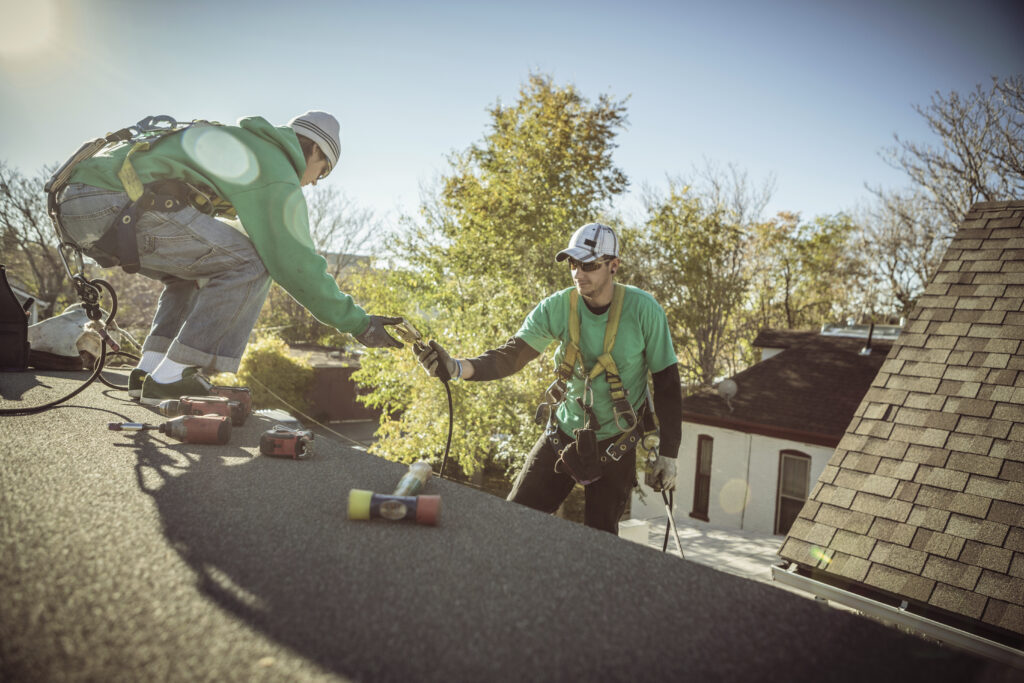
What is the difference between active & passive edge protection?
Roof edge protection falls into two broad categories: passive and active systems.
A. Passive Fall Protection Systems
Passive systems are the most straightforward and reliable. They are built into the environment and require no active participation from workers. Examples include:
- Roof Guardrails and Barriers: These are physical barriers installed around the roof perimeter to prevent falls such as fall protection handrails acting as guardrails.
- Skylight Covers: These cover fragile surfaces like skylights, which could pose a risk of falls.
- Infill Panels: Used in cases where the roof pitch exceeds 26 degrees to prevent workers from slipping through gaps.
These systems are advantageous because they do not rely on worker compliance or intervention; once installed, they offer continuous protection. Scaffolding edge protection falls into this category as well, but it is considered a general roof scaffolding solution and is not tailored exclusively as a solution.
B. Active Fall Protection Systems
Active systems, on the other hand, require workers to use personal protective equipment (PPE), such as harnesses and lifelines. These include:
- Fall Restraint Systems: These prevent workers from reaching the roof edge. Workers are tethered using a harness attached to an anchor point, limiting their movement and ensuring they cannot fall.
- Fall Arrest Systems: These systems are used in the event of a fall to stop the worker’s descent and minimise injury. Fall arrest systems are usually employed as a last resort when passive measures are not feasible.
Safety Anchor Points & Fall Arrest Systems
Safety Anchor Points & Fall Arrest Systems fall into the active category of edge protection. Safety anchor points are a component of edge protection and are frequently used by abseilers for maintenance and window cleaning on very high buildings. They require frequent pull testing. At the same time, fall arrest systems protect workers in the event of a fall and minimise injury by arresting the fall through a series of mechanisms depending on the product.
Each of these topics requires in-depth knowledge, which we have covered here. You can find detailed information on safety anchor points, fall restraint systems, and fall arrest systems.
Why choose one over the other?
When considering the choice between passive and active systems, it is important to take into account the frequency of access needed and the roof’s design. Passive systems are going to be inherently safer and require less costs for ticketed harnessed labour while also being best suited for situations requiring frequent access and where the roof design can integrate a built-in solution.
On the other hand, active systems are more suitable when passive systems are not practical due to roof configurations or space limitations.
To choose, consider your task at hand and develop yourself a safety work method statement to cover the risks and list the solutions to mitigate those risks.
Types of Roof Barriers for Temporary Edge Protection
There are many forms of temporary edge protection systems available as proprietary edge protection products. Before selecting one, it’s important to get an idea of the solutions available for the task at hand.
For Residential Buildings 3 Stories and Under:
Residential roofs typically involve lower heights, which makes edge protection systems like guardrails a popular and practical choice. In these cases, guardrails can be installed with the boards or mesh infills to prevent tools or materials from falling off the roof. These barriers offer sufficient protection for workers performing maintenance or installation tasks on flat or low-slope roofs. Temporary systems are often used here since residential projects usually have shorter timelines.
Additionally, for homes with fragile surfaces like skylights, mesh covers or infill panels are essential to prevent accidental falls through the roof. Roofs with a steeper pitch (e.g., above 26 degrees) require more specialised solutions, such as infill panels and fall restraint systems, to ensure the safety of workers while providing access to difficult-to-reach areas.
Types of Roof Barriers
During construction, residential buildings will typically use some everyday guardrail products applied to the soffit (typically an eave in residential). Some of these solutions are:
- Truss-fixed Brackets: These are fastened into the soffit truss and extend beyond the gutter to support railings. This type of guardrail is primarily used during the construction phase.
- Advantages: Truss-fixed systems are typically cost-effective and quick to install, making them ideal for projects that need temporary protection at a lower cost.
- Disadvantages: Since these brackets require fixing into the structure, they can leave behind damage, such as holes that need to be repaired after removal. Additionally, a ladder or harness may be required to secure the railings, and dismantling can be slower, especially with the need for repatching the area post-removal.
- No-Fixings Brackets: These brackets push against the underside of the soffit using a jack and non-slip pad to apply upward pressure from the ground. They are suitable for both construction and maintenance projects, providing flexibility without permanently attaching to the structure.
- Advantages: This solution is fast to install and doesn’t require permanent fixings, which reduces the need for structural repairs afterwards. It’s versatile for both short-term maintenance and ongoing construction.
- Disadvantages: While quick to install, a ladder or harness might still be needed for setting up railings, and though there are no fixings into the structure, installation can be slightly less stable than fixed systems.
- Mobile Platforms: These portable systems can be repositioned around the work area without the need for any attachment to the structure. They are suitable for both construction and maintenance tasks, offering mobility and convenience.
- Advantages: Mobile platforms don’t require any fixings, which eliminates potential damage to the building. They can be flat-packed and assembled by a single person, making them easy to move around the site for flexible usage.
- Disadvantages: These platforms have more components compared to fixed solutions, resulting in longer assembly and disassembly times. They may also require more space for safe maneuvering around the building
For Commercial Buildings or High-Rises:
In commercial or high-rise buildings, roof applications often involve much higher heights and more complex configurations. These structures typically require more robust and permanent roof edge protection systems. Permanent guardrails are often installed along the perimeter to provide consistent, long-term protection for workers who need regular access for maintenance tasks, such as servicing HVAC units or solar panels.
For high-rise buildings, active fall protection systems such as harnesses and anchor points are more frequently used in conjunction with passive barriers to provide an extra layer of security. Given the greater height and wind exposure, systems on commercial roofs need to meet stringent safety standards and offer additional safeguards to prevent falls.
Types of Roof Barriers
1. Temporary Roof Barriers
Temporary roof barriers are generally installed during construction or short-term maintenance and are fixed to the structure using fasteners. These systems often consist of panels or railings that are attached to the building temporarily, ensuring worker safety while allowing for flexibility.
- Advantages: Quick to install and remove, cost-effective for short-term use.
- Disadvantages: Since they are fixed into the structure, they may cause minor damage that requires repair after removal.
2. Permanent Roof Barriers
Permanent systems, typically comprising custom-fabricated panels or railings, are designed to remain on the roof for the building’s lifespan. These systems are usually tailored to the building’s specific design and may require on-site modifications during installation.
- Advantages: Long-lasting protection, customised for the building, minimal need for frequent replacements or adjustments.
- Disadvantages: Higher initial cost and more complex installation due to the need for customisation and on-site modifications.
3. Temporary to Permanent (Non-Drill) Roof Barriers
A new innovation in the field of roof barriers is the NON-DRILL system, which offers a flexible solution that transitions from temporary to permanent use. This system eliminates the need for drilling or fixing the structure, using a simple methodology that allows it to serve both short-term and long-term purposes. It can also be customised with panels if required.
- Advantages: No damage to the structure, adaptable for both temporary and permanent use, customisable for complex roof designs.
- Disadvantages: Some training requirements for installation
NON-DRILL can be installed very easily from a temporary to a permanent application. You can watch how it’s done with this animation.
Scaffold Edge Protection
Earlier, we briefly mentioned scaffolds as an option for roof barrier protection. Scaffold-based systems offer a practical and flexible solution for both residential and commercial projects. They can be used as temporary edge protection, especially during construction and renovation projects where workers need stable access to elevated areas.
While scaffolding provides a solid base for creating edge protection from standard scaffolding components, it comes with one big caveat. Cost.
Scaffold erection typically requires ticketed labour to install which can increase costs and time to install, maintain, and inspect on site. For the remainder of the article we’ll focus on specfic edge protection solutions, but for scaffolding edge protection specifically, we’d encourage you to read our blog Three Examples of Scaffold Edge Protection.
How to Choose the Right Roof Edge Protection
Choosing the right roof edge protection products depends on factors such as building type, project duration, roof design, and specific safety needs. For residential buildings (3 stories and under), quick-to-install solutions like truss-fixed brackets, no-fixing brackets, or mobile platforms are commonly used due to shorter project timelines. These options also help minimise damage to the structure.
For commercial buildings or high-rises, more robust systems are required. Permanent roof barriers are ideal for long-term maintenance, while temporary roof barriers are better for short-term projects. The Non-Drill system offers flexibility, allowing a temporary setup that can later transition into a permanent one without structural damage.
Consider the project timeline, use case, roof design, and ease of installation when selecting the right system. For a detailed guide on selecting the right roof barrier protection, read the full process in our article How to Choose the Right Roof Edge Protection.
Roof Barrier Regulation & Compliance
To ensure maximum safety, all roof edge protection systems must comply with stringent safety standards and regulations. The key regulatory frameworks include:
-
AS/NZS 4994.1: This standard outlines general requirements for temporary roof edge protection, including design, testing, and manufacturing specifications.
-
Safe Work Method Statements (SWMS): Required for tasks that involve working at heights over 2 meters. These documents detail the risks and the control measures that will be implemented to ensure worker safety.
-
Inspection and Maintenance: Once installed, systems must be inspected regularly, especially after adverse weather conditions or other unplanned events that could affect their integrity. Periodic checks should be documented, and a handover certificate must be provided after installation.
Cost and ROI Considerations
Investing in roof barrier protection offers a significant return on investment in terms of improved safety, reduced liability, and extended building longevity. By preventing accidents and minimising the risk of structural damage, roof barriers contribute to long-term cost savings and peace of mind for building owners and contractors.
Understanding the return on investment
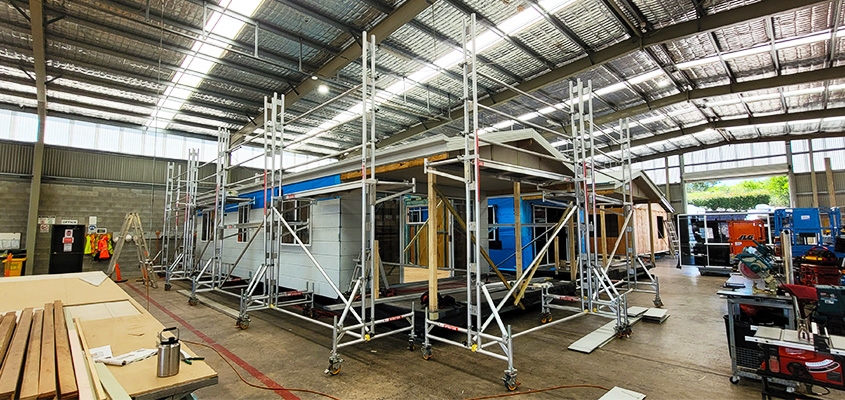
When comparing roof barrier protection systems to harnesses and fall arrest systems, it’s essential to consider both the initial investment and the long-term return on investment (ROI). Here’s a breakdown of the key arguments for each:
Roof Barrier Protection Systems:
- Improved Safety: Roof barriers offer passive protection, meaning they do not rely on worker compliance or engagement. Once installed, they provide continuous protection, reducing the risk of accidents.
- Reduced Liability: By ensuring a safer work environment, roof barriers can significantly reduce potential liability from falls and injuries, helping avoid costly legal issues and insurance claims.
- Longevity: These systems also protect the roof itself, minimising the risk of damage and wear caused by falls or workers moving equipment. This translates into less frequent repairs and extended building longevity.
- Long-Term Savings: Although roof barriers can have a higher initial cost, the long-term savings from reduced accidents, lower insurance premiums, and fewer maintenance needs make them a strong investment over time.
Harnesses and Fall Arrest Systems:
- Lower Initial Cost: Harnesses and fall arrest systems typically have a lower upfront cost compared to installing permanent roof barriers, making them more accessible for short-term projects or businesses with tight budgets.
- Active Engagement Required: These systems rely on workers wearing and properly using the equipment, which introduces potential risks if protocols are not followed correctly. This makes safety more dependent on human behaviour.
- Specific Situations: Fall arrest systems are particularly useful in areas where roof barriers cannot be installed or on roofs with unique designs that make barriers impractical. They are often the only option for roofs with complex or irregular structures.
- Increased Maintenance: Harnesses and fall arrest systems require regular inspections, certifications, and replacements, which can lead to higher ongoing costs compared to passive roof barriers.
The Argument for Harnesses and Fall Arrest Systems
While roof barriers offer better long-term savings and safety, harnesses and fall arrest systems can be more cost-effective for short-term projects or in areas where roof barriers cannot be installed. They offer flexibility and lower initial costs, which can be advantageous for businesses that need temporary solutions or have highly variable work environments. However, the overall ROI calculation should consider reliance on worker compliance and the need for regular maintenance.
Budgeting for long-term roof maintenance and protection
Incorporating roof barrier protection into the long-term budget for building maintenance is essential for ensuring ongoing safety and compliance. By allocating resources for regular inspections, maintenance, and potential upgrades, contractors and building owners can proactively manage the safety and integrity of the building’s roof barrier protection system.
Wrap-Up: What Roof Barrier Protection Works For You
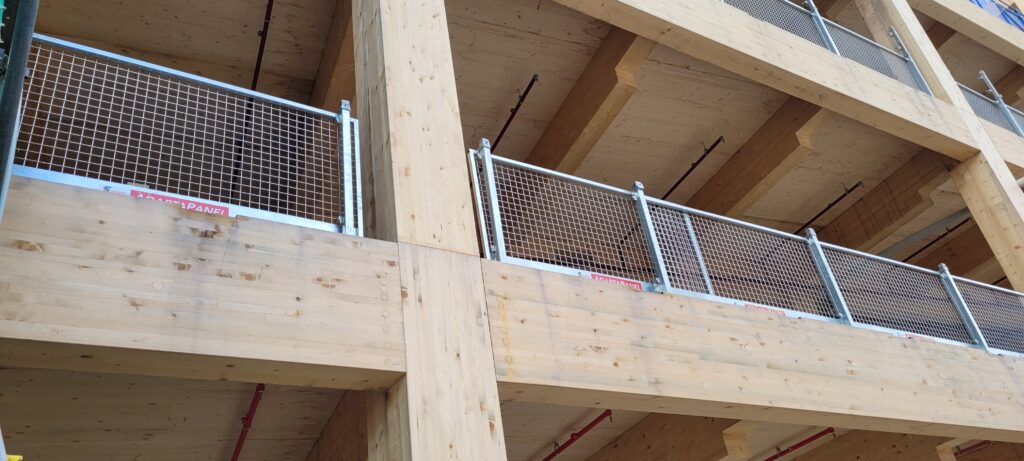
Roof barrier protection is a vital element in ensuring safety for workers at heights, whether during construction or maintenance. This comprehensive guide has explored the importance of roof edge protection, the distinctions between passive and active systems, and the types of barriers suited for residential, commercial, and high-rise buildings. By choosing the right edge protection products — whether it’s temporary, permanent, or a flexible option like Non-Drill systems—contractors can create a safer working environment while protecting the structural integrity of buildings.
Investing in these systems offers significant long-term benefits in terms of improved safety, reduced liability, and extended building longevity. While roof barriers often provide better ROI through continuous passive protection, harnesses and fall arrest systems can be cost-effective for short-term needs or complex roof designs. Ultimately, the right solution depends on project-specific requirements, building design, and budget considerations.
For a deeper understanding of how to select the best roof edge protection system for your project, be sure to read our detailed guide on How to Choose the Right Roof Edge Protection.

